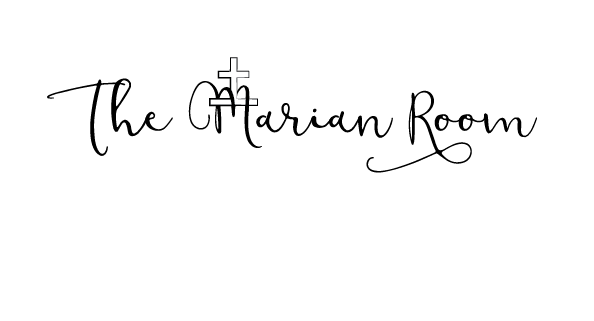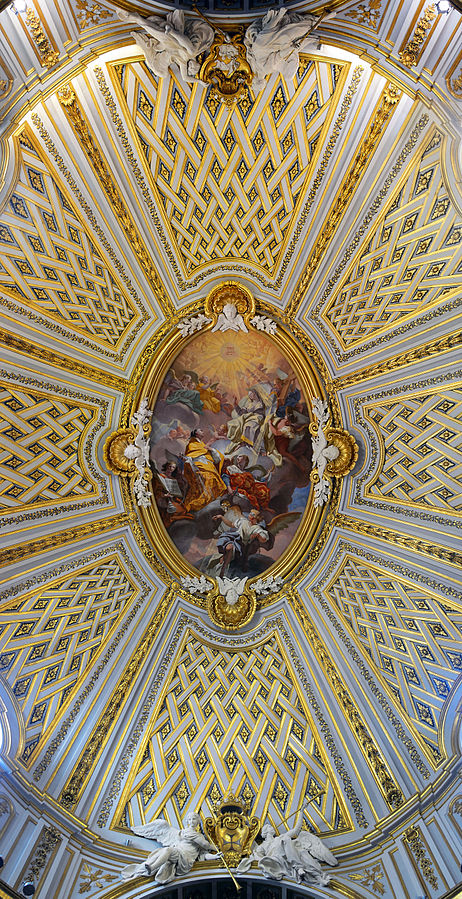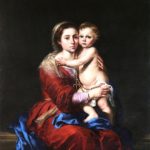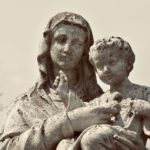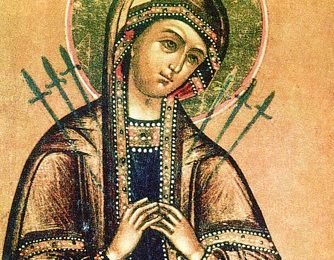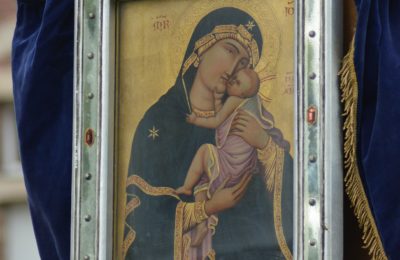“My dear, dear brothers, our dear little, little mother, Immaculate Mary, can do anything for us. We are her children. Turn to her. She will overcome anything.” ~St. Maximilian Kolbe
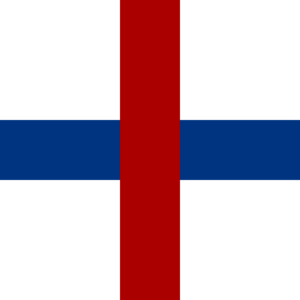
Today is the feast of Our Lady of Good Remedy. Our Lady has been honored under this title since the founding of the Trinitarian Order by St. John of Matha in the twelfth century, and it seems that St. Maximilian Kolbe speaks of Our Lady in a similar fashion; in particular, in the quote (above), as the Good Mother who provides a Good Remedy.
But, back to the Trinitarians: the Trinitarian Order was established to free Christians who had been captured into slavery by Muslims. The habit of the Trinitarian Order is noted for its blue and red cross (pictured, above). The following is a brief history of the Trinitarian Order:
“800 years ago Christians were being captured by the Moslems and sold into slavery by the thousands, and nobody knew what to do about it. Then, in the year 1198, a man had an idea. St. John de Matha founded the Trinitarians to go to the slave markets to buy (ransom) the Christian Slaves and set them free. To carry out this plan, the Trinitarians needed large amounts of money. They placed their fundraising efforts under the patronage of Mary. According to very ancient documents the feast of the Virgin was celebrated solemnly by Trinitarians. Every week since the year 1262, by a special indult, the Trinitarian communities prayed the office of the Virgin. The Trinitarians were moved to show this special devotion to the Virgin because of her relationship with the three persons of the Trinity, because of the great love with which the Virgin collaborated in the redemption of the world and because often, when carrying redemptions of captives, they experienced special help from the Virgin of Remedy. They were so successful that, over the centuries, the Trinitarians were able to free thousands and thousands of people and return them safely home.
All of this contributed to the fact that the Trinitarians became known for their veneration of the Virgin under the title of “Remedy” or “Good Remedy” and that confraternities, altars and images were set up in her honor. By singular graces, the Virgin manifested how pleased she was by this invocation.
Devotion to Mary under this title is widely known in Europe and Latin America. Our Lady of Good Remedy is often depicted as the Virgin Mary handing a bag of money to St. John of Matha. When in need – for whatever reason, but especially where you have had difficulty obtaining help – invoke the aid of Our Lady of Good Remedy and you will surely experience the power of her intercession.
The feast of Our Lady of Good Remedy is celebrated on October 8.” source
There are many needs in the world, and in our personal lives. Often these difficulties seem insurmountable. We can trust that Our Lady will come to our assistance as our Catholic ancestors, St. John of Matha, and St. Maximilian Kolbe, did.
St. John of Matha freed an innumerable amount of persons from the degradation of slavery. Maximilian Kolbe lived through the horrific conditions of Auschwitz, and a degrading death, with calmness and an unflagging charity; which all witnesses say was extraordinary, and miraculous.
These two saints, if they could hop into a(n) (imaginary) time-travel machine today, would say to us what they lived, preached, and recorded in writing: entrust yourself, your family, your life, your country, and our world to the Virgin Mary, and allow her to provide the Good Remedy of a Good Mother.

May you have a good day!
•SCF
~Top image: “Ceiling of church Santissima Trinità a Via Condotti or Santissima Trinità degli Spagnoli (Rome): ‘the glory of Saint John of Matha’, by Gregorio Guglielmi.” (source of text and image, here)
~Second image: flag of the Trinitarian Order, image source
